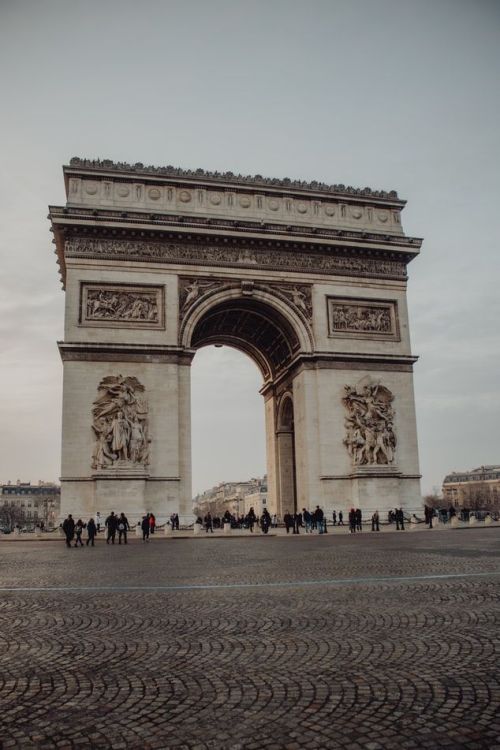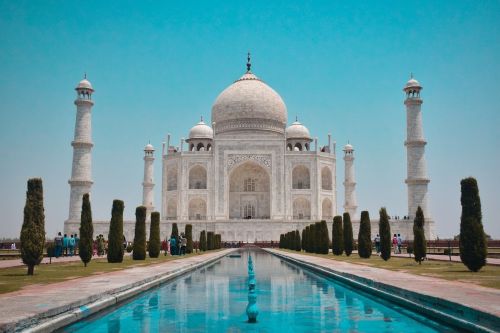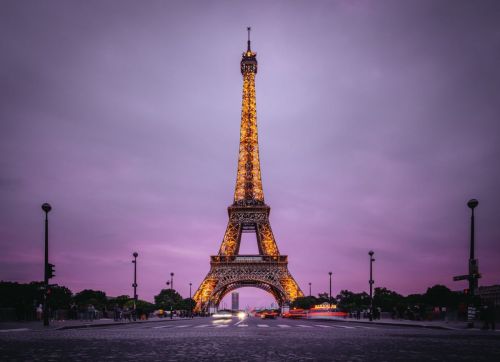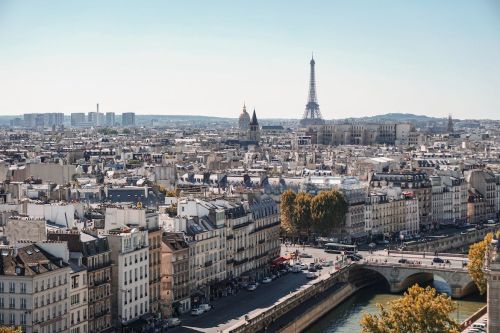The Palace of Versailles is one of the largest palace complexes in Europe. It is part of the historical and cultural heritage of France, as a symbol of the despotic monarchy known in French as Ancien régime. From the mid-17th century until the French Revolution, it was the main residence of the kings of France. This baroque building is considered a pearl of European palace architecture, on which many other palace buildings from the 17th to the 19th century were modeled.
Versailles is located in the Ile-de-France region in the Yvelines department. It is located in the western suburbs of the French capital, 17.1 km from the center of Paris.
In the 21st century, Versailles is a wealthy suburb of Paris with an economy based on services as well as tourism. The city has over 85.000 inhabitants.
It served in this capacity for over a hundred years, from 1682 to 1789, before it became the cradle of the French Revolution. After losing its status as a royal city in 1790, Versailles became a prefecture of the Seinte-et-Oise department, and from 1968, Yvelines.
In the 17th century, there was a ruined castle and a mill there. The land and estates belonged mostly to the local Gondi family. The remaining, smaller part was royal property.
Louis XIII, who often visited these game-rich areas for hunting, occasionally stayed in a medieval castle and even a mill.
In 1623, the king ordered a small hunting lodge to be built in place of the mill, where he stayed for the first time in 1624. This residence, sometimes ridiculed as a card castle (house of cards), was so small that it did not even have quarters for the queen.
To this day, the hunting lodge is the core of the palace complex at Versailles, enclosing the marble courtyard.
Louis XIV visited the hunting lodge as a child. He liked staying there because he could freely enjoy nature and organize his first hunts there.
When he became a father for the first time, he decided to rebuild the palace for greater comfort for the royal family. A balcony was then installed on the first floor, the moats were straightened and the park was re-arranged.
In place of the vegetable garden, the architect Le Vau built an Orangery where orange and lemon trees were stored during the winter. In the Orangery there was one of the three flower parterres surrounding the palace.
In the place of the former farm, a Menagerie was built (modeled on medieval animal gardens), from the balcony of which one could admire seven courtyards with exotic animals: elephants, camels, ostriches, pelicans, and rare varieties of chickens.
Despite these changes, Versailles was considered to be a country residence unworthy of the King of France.
It was supposed to look like the fairy-tale "Palace of the Sun (Palais du Soleil), and King Louis XIV residing there would be the Sun King (Roi Soleil).
In connection with this concept, numerous fountains and sculptures depicting the story of Apollo, the ancient sun god, were installed in the garden.
The famous fairy-tale writer Charles Perrault proposed to build a grotto that would bring to mind the mythical sea sun cave, where the sun was supposed to rest after dusk.
The cave was built north of the palace. It was finished with colorful shells, corals, sea stones, and mirrors. The park has a roller coaster, a maze, swings, and numerous fountains (39) decorated with sculptures of famous fairy-tale characters.
The architect suggested that Louis XIII's existing hunting lodge be closed down, but the king did not agree to it. It was incorporated into the palace complex and surrounded by new buildings.
Because the expansion of the palace disturbed the king's peace and privacy, another palace, Trianon de Porcelaine, was built one and a half kilometers away within three months.
The palace gained a new facade on the garden side, with a huge marble terrace separating the two wings, which were built on the site of the former moat.
One wing belonged to the king - there were his apartments, the other to the queen and other members of the royal family. The palace was also extended from the courtyard towards the kitchen and stables, and the construction of pavilions for the ministers began.
Over the years, the palace was enlarged many times, in fact, it was built during the entire life of Louis XIV.
More than 30.000 workers participated in the construction. According to estimates, the costs related to the reconstruction, renovation, and then maintenance of the residence constituted approximately 25% of the royal treasury.
He stayed in Fontainebleau, Paris, and Saint-Germain, but already in 1677 he was considering making Versailles his headquarters. The king moved to Versailles on May 6, 1682, and gradually moved the royal court there as well.
The Palace of Versailles became the official residence of Louis XIV and his ministers, and thus Versailles took over the role of the capital of France from Paris.
Versailles became the largest palace in Europe, several thousand courtiers and servants lived there.
It was then that he left his apartments and settled in his favorite part of the palace on the courtyard side, which was the western part of Louis XIII's hunting lodge.
The decoration of this part of the palace was much more modest. There were no marble decorations or sculptures, only wainscoting and white-painted ceilings. There were, however, paintings by old masters.
Louis XIV enjoyed spending time in the billiard room in the company of his family and guests.
Louis XIV spent over thirty years in Versailles until his death on September 1, 1715.
Its interior is described as "Louis XIV style". There are several hundred chambers there, the most famous of which is the so-called Solar Room, also known as the Hall of Mirrors.
It is the largest room in the entire palace (next to the palace chapel, the Court Opera, and the Galerie des Batailles), filled with 17 huge mirrors that illuminate the room. There are frescoes on the vault showing the military successes of Louis XIV.
The Hall of Mirrors was the site of events of great historical importance, including the proclamation of the German Empire and the signing of the Treaty of Versailles.
There were several thousand courtiers and servants in the palace complex at the same time. Crowded conditions were experienced primarily by the servants, who crammed into bunks, in warehouses or rooms intended as dressing rooms for the nobles.
They could count on special treatment and luxurious apartments. Among the royal favorites, special places were held by: the Marquise of Montespan, the Marquise of Maintenon, the Duchess of Barry, and the Marquise of Pompadour. The Marquise of Pompadour in particular enjoyed great favor from the king. She was the organizer of lavish balls at Versailles.
The palace was built on the site of former wetlands, and the lack of sanitary facilities and proper ventilation made the place a breeding ground for bacteria. The luxurious palace interiors were stuffy, saturated with stench, and damp.
The pressing problem was the insufficient number of bathrooms that could be used not only by guests but also by servants. The king and queen had their brass bathtubs, but other palace users only wiped themselves with cloths soaked in water and vinegar.
The example was set by the ruler himself, who did not use cutlery when eating and washed his hands with Bourbon - he claimed that in this way he protected himself against germs.
Bad breath was eliminated by chewing cloves or other aromatic herbs.
Neglected hair was hidden under the sophisticated wigs that were fashionable at that time.
There was also a lack of toilets, which was coped with by using fabric-covered chairs with holes in them. Chamber pots were used, the contents of which were "disposed" through windows, behind walls, and most often into fireplaces. Castle gardens most often served as toilets in Versailles.
In 1715, Louis XIV issued a regulation ordering that feces be cleaned from the corridors of Versailles once a week.
This was the standard of cleanliness at that time, which did not include washing the body itself, but only wearing clean underwear. This procedure had its scientific justification.
It was believed that white linen absorbs sweat because it is oily and salty, and therefore easily absorbs into dead plants (linen shirts). This was considered better than bathing and therefore hygiene was not very popular at Versailles.
Instead of washing, huge amounts of substances were used to mask the questionable state of cleanliness: powders, roses, and perfumes. The perfume was used in huge quantities and the stronger the scent, the better. Especially those with a heavy scent were used, made based on civet (secretion of the civet's anal glands), ambergris (secretion from the digestive tract of the sperm whale), and musk (secretion from the scent glands of the Siberian musk deer).
When getting out of bed, he underwent a kind of "ablution": he was massaged, his shirt was changed because he was sweating quite a bit, and then a small amount of wine was sprinkled on his hands, which he also used to wipe his face and rinse his mouth.
During the day, when the king participated in some physical activity, e.g. fencing or dancing, he was sweaty and changed his shirt again every time he felt the need.
Thanks to this, he was considered a great pedant at court, changing his shirt up to three times a day.
There was a marble bathtub, or rather a swimming pool, which was used not so much for hygiene purposes, but rather as a place for the king's amorous trysts.
When the king bathed in the pool as part of the medical treatment recommended by the doctors, his well-being worsened. And every time doctors recommended swimming pool treatments to balance hormones, history repeated itself. Therefore, the king did not bother to take a bath, and the lack of baths did not bother him at all.
There were two bathtubs in the king's apartment: one for soaping, the other for rinsing. The problem in those days was maintaining privacy while bathing. In order not to embarrass the king, the water was clouded with marzipan, bran, flour, or resin dissolved in wine.
Women bathed in special bathrobes or underwear.
King Louis XVI returned to Paris, and the palace, deprived of its royal court, began to decline. There were proposals to demolish the palace, eliminate the gardens, and give the area to agriculture.
However, this idea was not implemented, the revolutionaries were content only with ransacking the palace, and stealing furniture and works of art, which were later found throughout Europe and America.
Attempts were made to organize a museum, a school, and a hospital in the palace, but they failed. Napoleon ordered the most urgent repairs and saved the palace from ruin.
He began a general renovation of the palace, but he never lived there.
During the four-year period of work, many apartments of princes and courtiers were liquidated - from over thirty rooms, the hall of 1830 was created (it told the story of the revolutionary events that brought Louis-Philippe to the throne).
The French History Museum collects paintings and sculptures illustrating the most famous moments of French history.
The building is topped with a balustraded attic, which housed the apartments of the royal court. The king and princes lived in the central part of the palace and its wings.
On the first floor there is a chapel and six large chambers where courtiers were received three times a week.
The palace has three courtyards: the Courtyard of Ministers, the Royal Courtyard with the equestrian statue of Louis XIV, and the Marble Courtyard, with some buildings forming part of the hunting lodge of Louis XIII.
The most famous facade of the palace is 560 meters long and overlooks a wonderful garden.
It presents the era of Louis XIII and Louis XIV. From the Museum you go to the Opera House, which was designed in 1770 on the occasion of the wedding of Louis XVI and Marie Antoinette.
In 2011, Marie Antoinette's original desk was purchased for €6.75 million and is displayed in the Queen's apartments, in the golden study.
There is a 250-acre garden there, which is considered the prototype of a French-style garden. In the northern part of the park, there are the palaces Grand Trianon, and Petit Trianon, further gardens, and a small farm built for Queen Marie Antoinette.
In the southern part of the park, there is La Lanterne - a residence that has served as an auxiliary residence of the presidents of France since 2007.
In its heyday, 6300 cubic meters of water were used per hour during a three-hour show (they were powered by water from the Seine).
In 1999, a storm knocked down 18.500 trees in the park.
The best soil was brought there and vegetables and fruits were grown there for the king's table. The garden provided its produce even after the season, e.g. strawberries in March or lettuce in December.
The vegetable garden was the pride of Louis XIV, who demonstrated it to his guests, including the ambassador of Siam or the Doge of Venice.
The Palace of Versailles still serves political functions. Heads of state are received in the Hall of Mirrors, the bicameral French Parliament meets in Versailles in a joint external session to revise the French constitution, a tradition that came into force with the promulgation of the constitution of 1875.
The President of the National Assembly has his official residence in the Palace of Versailles.












